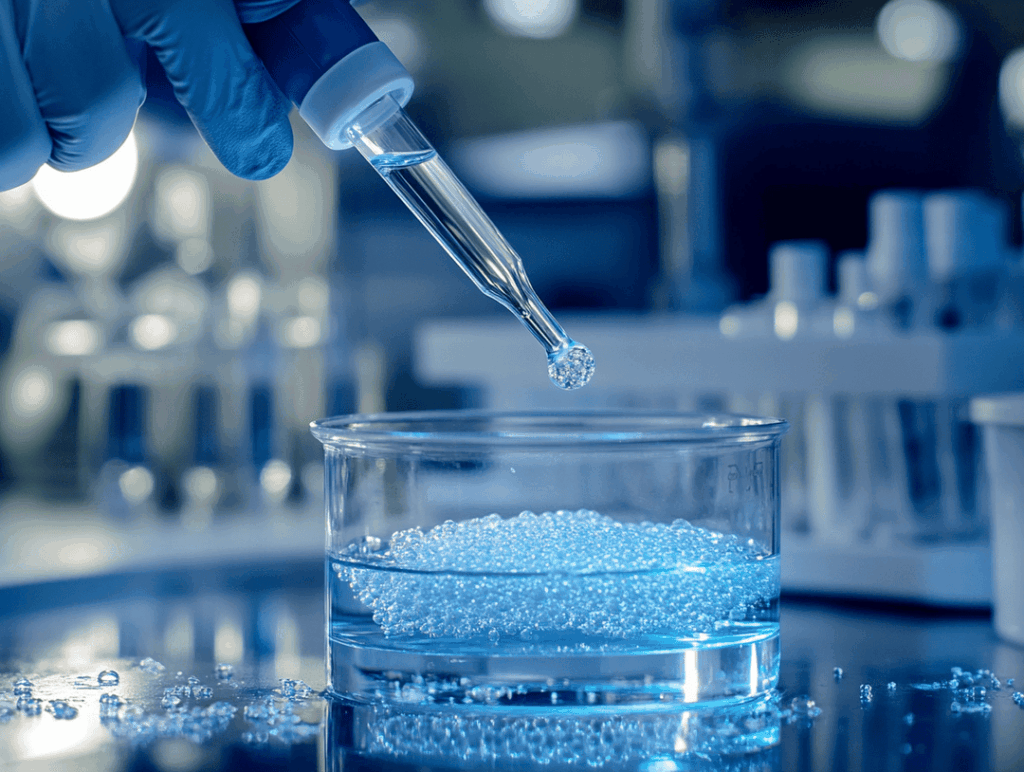Microencapsulation has clearly demonstrated its value across numerous and diverse industrial applications. In this article, we analyse four advanced microencapsulation techniques and explain why we believe that, in the coming years, they will gain increasing relevance in food and beverages, cosmetics, and pharmaceuticals as a driver of product innovation.
Microencapsulation is a process in which bioactive substances are coated with a covering material to form microcapsules or aggregated microparticles. The purpose of this process is to protect them from external agents that may compromise their stability (extreme temperatures, pH, humidity, light, etc.). In this way, we are able to maintain their viability, control their release until they reach their target, and even modify their properties.
Main Advantages of Microencapsulation
Some of the most relevant advantages include:
-
Increased effectiveness of active principles
-
Extended duration of active substance effects
-
Control over the timing of release
-
Reduction of undesirable aromas and flavours
-
Separation of ingredients within the same matrix
-
Stabilisation of microorganisms
-
Reduced dosage requirements
-
Handling of liquids in solid form
All these aspects explain why microencapsulation is increasingly recognised as a valuable solution for the development of innovative products with advanced, effective, safe, and healthier properties. It also represents an interesting option for reducing the costs of industrial processes.
If you would like to learn more about the differences between the main microencapsulation techniques, you can download our comparative table with their applications, advantages, and key considerations.
👉5 microencapsulation techniques pdf
5 Microencapsulation Techniques for Innovation in Food, Cosmetics, and Pharmaceuticals
With more than a decade of applied research and technological development in the field of microencapsulation, we have advanced a growing number of microencapsulation techniques that allow us to overcome current limitations in the use of this technology. Although there are many others, we highlight those that we consider the most promising in the coming years and explain why.
1. Spray Chilling, Spray Congealing, or Spray Freezing
The need to produce encapsulated compounds with lipid-based coating materials (oil-type) arises mainly in pharmaceutical applications or certain types of food active ingredients.
In general, lipid coatings provide protection against gastric conditions. They are also an appropriate alternative for encapsulated products intended for temperature-triggered release, such as baking ingredients.
For example, encapsulated active compounds added to biscuits or cakes: if they were not coated, their activity would be lost during preparation.
These are applications with coatings insoluble in aqueous media, which require the development of spray chilling or spray congealing processes, as well as the design of industrial equipment to implement them at scale.
2. Microencapsulação por Spray Drying com Solventes Orgânicos em Ambiente Inerte
The use of high temperatures in dehydration processes for thermosensitive active compounds, and the use of non-water-soluble coating materials, pose limitations for certain applications.
In some cases, coating materials dissolve better in ethanol or other non-aqueous solvents. In others, the compound to be encapsulated is already dissolved in an organic solvent.
Both challenges can be solved using microencapsulation techniques with organic solvents. These processes and equipment enable the solubilisation of non-hydrophilic coating materials and allow evaporation at melting points lower than water.
The development of these techniques, along with the necessary industrial equipment, is essential to bring to market products that cannot be manufactured with conventional technologies.
3. Ionic Gelation
In applications requiring the encapsulation of heat-sensitive, water-soluble compounds or functional actives in aqueous matrices, ionic gelation emerges as an efficient, versatile technique with high compatibility for food, cosmetic, and pharmaceutical environments.
This process is based on the interaction of biopolymers such as alginate with multivalent cations (e.g., calcium), forming gel-type structures that encapsulate the active compound. The resulting microspheres improve stability against oxidation, pH, or humidity, and enable controlled release depending on the application environment (e.g., the digestive tract).
Ionic gelation operates under mild conditions, in aqueous media and at ambient temperature, which makes it particularly useful for thermosensitive ingredients, probiotics, vitamins, or plant extracts. It also allows the design of formulations in different formats (microspheres, capsules, beads) and can be integrated with drying or agglomeration technologies.
This technique requires systems that ensure homogeneous particle size distribution and high encapsulation efficiency, aspects that can be addressed with pilot and industrial-scale expertise.
4. Microencapsulação com Fluidos Supercríticos
Another set of limitations in conventional processes arises with products that degrade very quickly even under mild temperature conditions, or in cases where the use of organic solvents is not possible, or where precise control of particle size distribution and structure is required.
For such products, supercritical fluid encapsulation can be an effective alternative. Moreover, combining extraction and microencapsulation in a single integrated process offers protection for compounds with minimal oxygen exposure — particularly suitable for substances highly prone to oxidation.
An example is limonene, a highly antioxidant compound present in orange peel, which can be extracted and encapsulated in cyclodextrins, sugars with large molecular cavities that stabilise the active compound.
5. Microencapsulation and Agglomeration of Microcapsules
Finally, work is also being carried out to address limitations related to particle size in encapsulation technologies.
In some cases, very small particle size makes handling at industrial scale difficult. Such particles cause powders to become too fluid, creating problems in transport and increasing aerosol formation.
One solution is the agglomeration of microcapsules, which facilitates safer and more efficient handling, particularly in industries producing preservatives and natural additives as fine powders.
In addition, agglomeration can improve redispersion in aqueous media, which is often a requirement for the final product.





